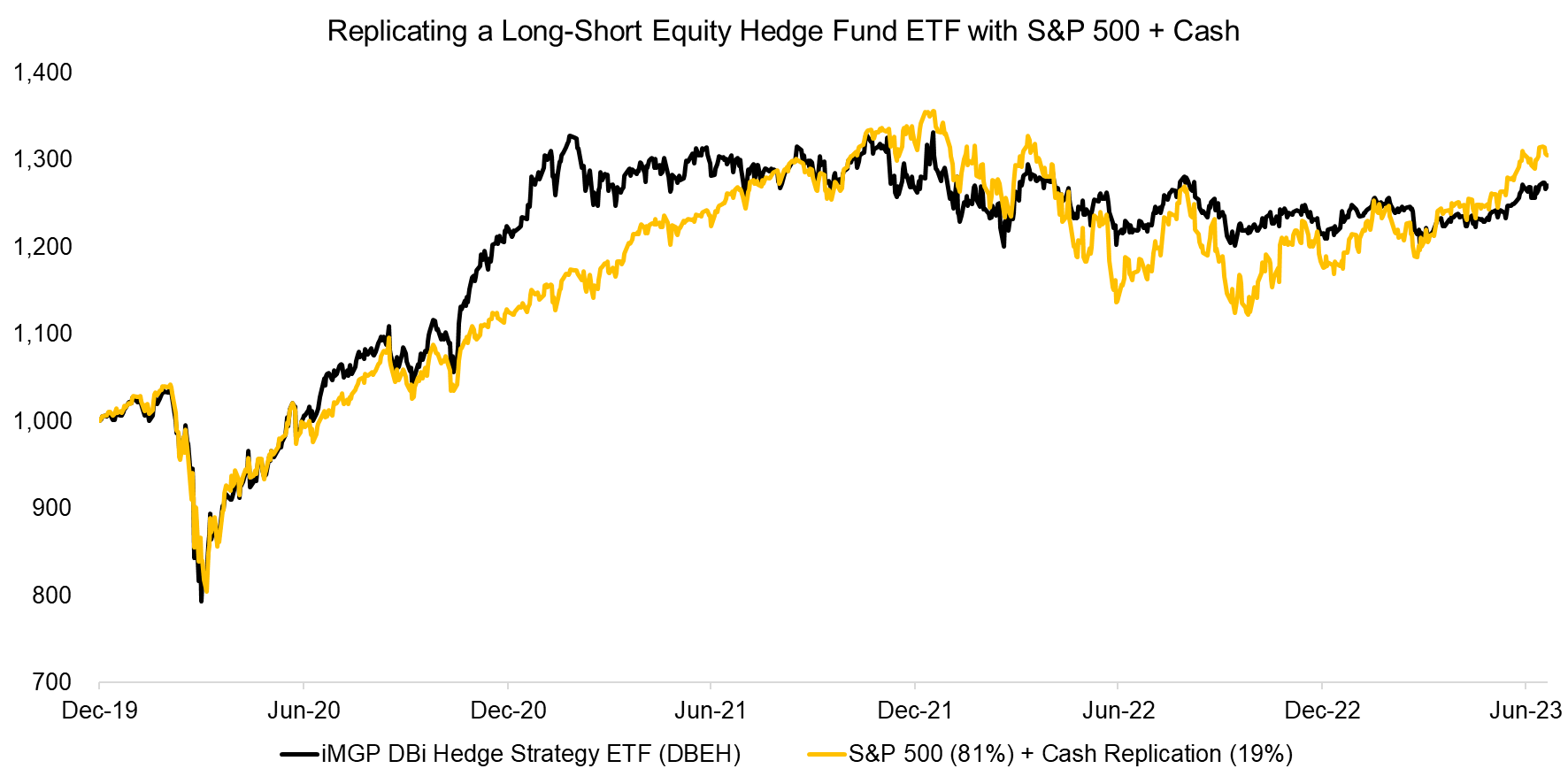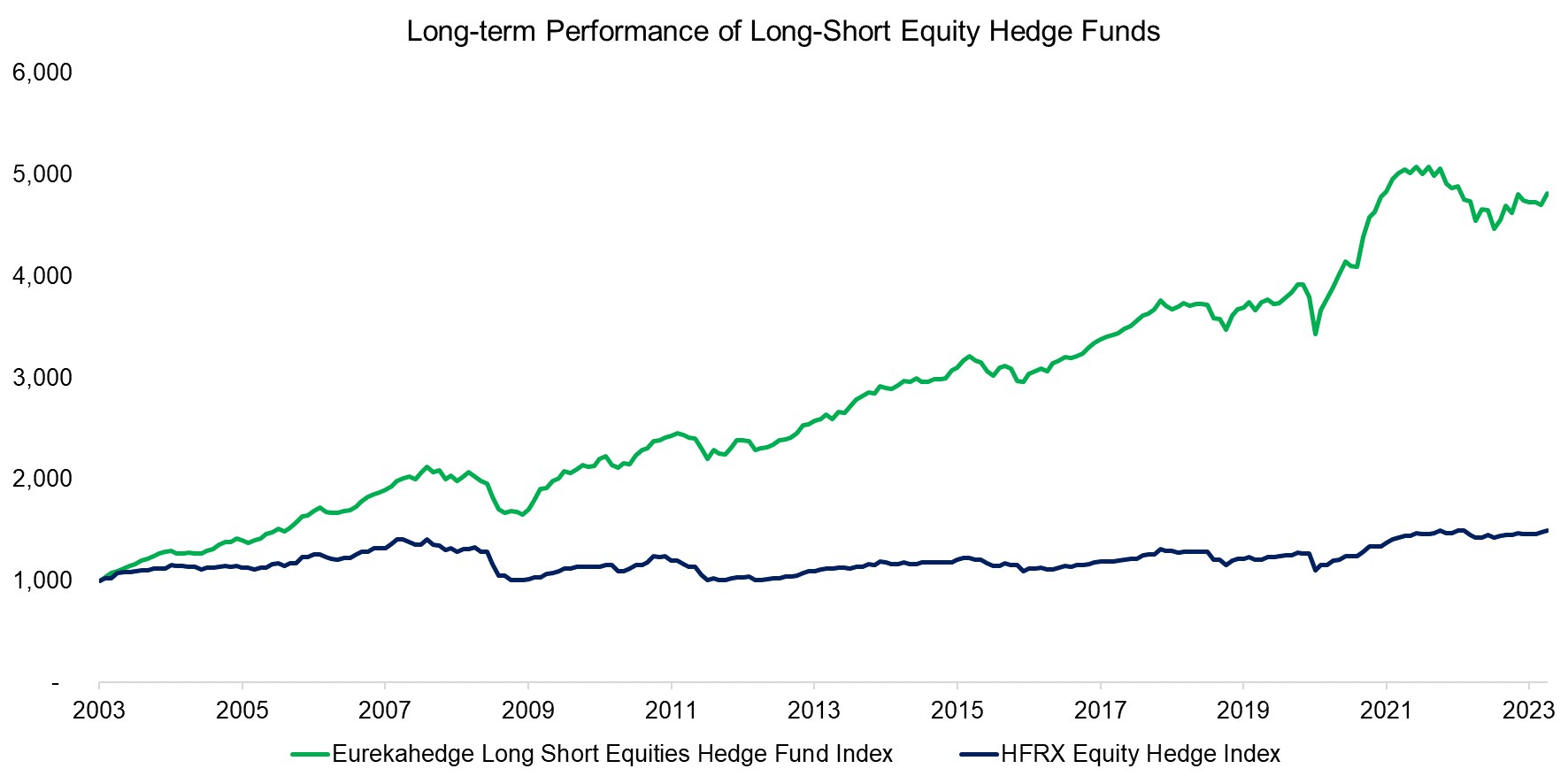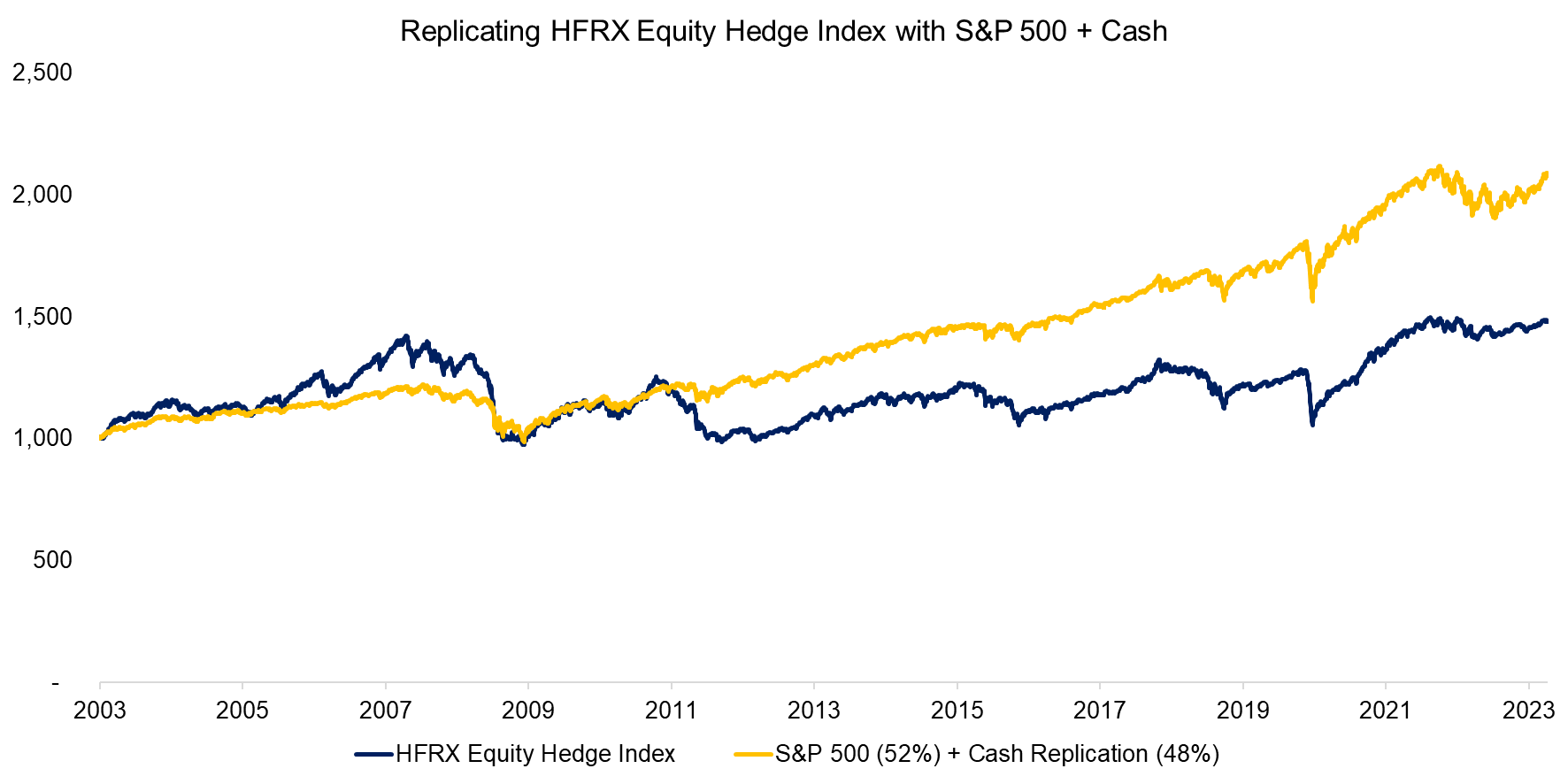When Hindsight Becomes Foresight: Replicating Investment Performance
When the tide goes out, you just find equity exposure
July 2023. Reading Time: 10 Minutes. Author: Nicolas Rabener.
This research note was originally published by the CFA Institute’s EI blog.
SUMMARY
- It is challenging to understand all the different types of investment strategies
- However, most of them simply offer diluted equity exposure
- This can be demonstrated via simple S&P 500 + cash combinations
INTRODUCTION
We have analyzed dozens of public and private market investment strategies, such as merger arbitrage and private equity, respectively, over the last few years, and one common theme has emerged. Most of the products described in more than 300 research papers simply provide exposure to the stock market in complicated wrappers. Once the tide goes out, the risk exposure is the same everywhere.
We can demonstrate this phenomenon in different ways. The most common approach is to simply run a factor exposure analysis. Investment products marketed as offering uncorrelated returns often exhibit high betas to the stock market, which highlights a lack of diversification benefits (read Myth Busting: Alts’ Uncorrelated Returns Diversify Portfolios).
But there is an even simpler and perhaps more powerful way to illustrate this point: by using a combination of the S&P 500 and cash to replicate the historical performance of an investment product with the same level of risk.
To demonstrate this, we analyzed the iMGP DBi Hedge Strategy ETF (DBEH), which tracks the 40 leading long–short equity hedge funds, and found that an 81% allocation to the S&P 500 and a 19% allocation to cash would have delivered almost the same performance with the same volatility.

Source: Finominal
From our perspective, these results called the utility of this ETF into question. A respected Twitter commentator, on the other hand, countered that the fund’s three-year track record was too short to draw any conclusions and that our replication process was simply based on hindsight. These were fair points, so we expanded our analysis.
PERFORMANCE OF LONG-SHORT EQUITY HEDGE FUNDS
Since the goal is to replicate equity-like returns with less risk, or exactly what a S&P 500 plus cash portfolio provides, we use long–short equity hedge funds as case studies. To evaluate each, we selected indexes that have extended histories across multiple market cycles. The Eurekahedge Long Short Equities Hedge Fund Index and HFRX Equity Hedge Index both have 20 years of history, which should be sufficient.
But Eurekahedge has a CAGR of 8.1% versus 2.0% for HFRX. Given that both aggregate the returns of single long–short equity hedge funds, such a large discrepancy is alarming and makes it difficult to evaluate each strategy’s attractiveness. Which one is better?
Of course, the number of funds in each index varies, but the crucial driver may be that Eurekahedge allows new fund managers to import their past track records once they start reporting. Since only fund managers with good past performance ask to be included in these indexes, a form of survivorship bias may be at work. So, capital allocators would be wise to ignore the Eurekahedge index and focus, as we do in the rest of our analysis, on the more realistic HFRX.

Source: Finominal
REPLICATING LONG-SHORT EQUITY HEDGE FUNDS
The HFRX Equity Hedge Index’s volatility was 6.1% over the 2003 to 2023 period, which we could have replicated with a 52% allocation to the S&P 500 and 49% to cash. But the replication portfolio’s CAGR would have been 3.7% compared with 2.0% for the hedge funds, and the drawdown would have fallen from 31% to 19%. This results in significantly higher risk-adjusted returns for the replication portfolio.
To be sure, investors do not have to conduct any due diligence on the S&P 500, whereas hedge fund analysis is an expensive process that requires an initial assessment as well as ongoing monitoring. Furthermore, an S&P 500 ETF today has basically zero expenses, while hedge funds come with high management and performance fees. So, who wouldn’t favor the replication portfolio?

Source: Finominal
FURTHER THOUGHTS.
Although a simple S&P 500 and cash portfolio would have achieved higher absolute and risk-adjusted returns than long–short equity hedge funds, might our analysis still be based on hindsight and have little relevance for expected returns?
Yes, but given the 0.71 correlation between the HFRX Equity Hedge Index and the S&P 500, there is little question that long–short equity hedge funds offer diluted equity exposure.
Furthermore, the HFRX index’s upside beta to the S&P 500 was 0.16 compared with 0.25 on the downside (read Downside Betas vs Downside Correlations). As such, equity hedge funds follow falling stocks more than rising ones. Obviously, this ratio is at parity for any S&P 500 and cash combination.
At some point, hindsight becomes foresight.
RELATED RESEARCH
Replicating Popular Investment Strategies with Equities + Cash
Replicating Famous Hedge Funds
Replicating a CTA via Factor Exposures
Time Machines for Investors
Factor Exposure Analysis 101: Linear vs Lasso Regression
Diversification versus Hedging II
Myth Busting: Alts’ Uncorrelated Returns Diversify Portfolios
ABOUT THE AUTHOR
Nicolas Rabener is the CEO & Founder of Finominal, which empowers professional investors with data, technology, and research insights to improve their investment outcomes. Previously he created Jackdaw Capital, an award-winning quantitative hedge fund. Before that Nicolas worked at GIC and Citigroup in London and New York. Nicolas holds a Master of Finance from HHL Leipzig Graduate School of Management, is a CAIA charter holder, and enjoys endurance sports (Ironman & 100km Ultramarathon).
Connect with me on LinkedIn or X.

